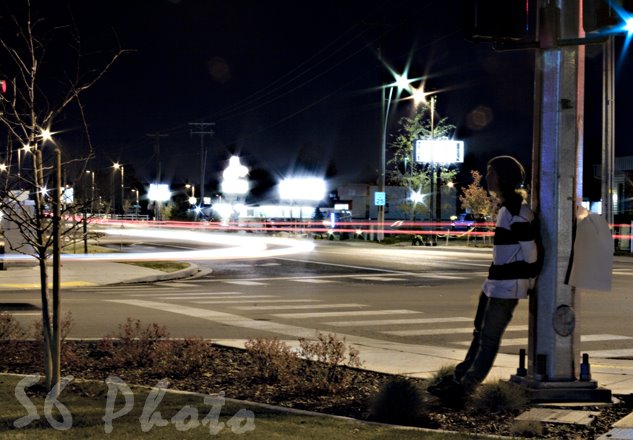When I got the call about a new street spot to shoot I was expecting the norm, a nice down rail, wall ride/pole tap, or a close out, but things were much different with this "street spot". This one was difficult to shoot to say the least. The main section was a rocky retaining wall that had been excaveted out of the side of a hill. There was a layer of chain link fence over the wall to keep large boulders from falling out. I showed up and had no idea how it was going to work until the master of the madness, Corey Schneider, pointed to the pole jam teetering atop the metal covered rock face. His plan was to ride up the pole jam, air into the top of the wall, and proceed to ride down the chain link fencing until he reached the transition(not so much) at the bottom of the face.
After I had a safety meeting with myself(mental checklist of route to the nearest hospital in case things went wrong), I faced the challenge of how I was going to shoot this beast of the feature. When it comes down to it this feature is big and no matter how you shoot it the rider is going to be small in the frame. With that in mind I approached it with the vision of printing this big, somewhere around the 20x30 size. The difficult part of the lighting is not hitting the rider correctly, it's hitting the rider correctly while lighting the entire rest of the frame, which in this case was a large area. In this situation the photographer can do one of two things, throw the kitchen sink at it and get a speedlite in every nook and cranny or stay basic and use a minimal number of flashes in the essential places. Option A is usually the easier, sure it takes a little longer to setup but manipulating the light is quicker and easier once flashes are in place. I was short on batteries so option A was ruled out and it looked I was going to have to keep things simple and rely on a few fundamental aspects of flash photography.
Primary light:
This is the main light on the rider. You always start with this flash and work your exposure and other flashes according to this one. In this case I'm using a Alien Bees B800 forward to my far left about 10 feet high pointing directly at the rider. The flash is at full power with a 8.5" high out put reflector that increases the power by 50%. This flash is setting the basis by hitting the rider and with the quick flash duration of the B800 at full power, freezing the action, the most important part of the shot. Some light spills to the wall from this flash but not much, the fill flash is what is needed to light the wall.
Rim/separation light:
Although the primary light is set first and everything else is built around it, in this instance equally important is the rim light. The rim light is a huge part of this photo because it separates the rider from the very cluttered background but most importantly it outlines the pole jam so the viewer can see where the rider is coming from. Without a rim light this photo would not work. I'm using a B800 placed directly behind the pole jam at full power with a 7" standard output reflector.
Fill light:
At that point the difficult part was done, all I had to do was light the wall/face of rocks. I used a Canon 430EX forward, to my left and close to the wall at full power. This lit the rock face from the side creating a small gridded shadow and making the chain link over the rocks apparent.
A close up showing what each flash was doing:

The final image(click in, its meant to be viewed big):

Props to Corey for putting down and turning a construction site into a playground. If you want to check out some not so simple artificial action sports lighting head over to http://www.erikseo.com/5.0/index.php.


No comments:
Post a Comment